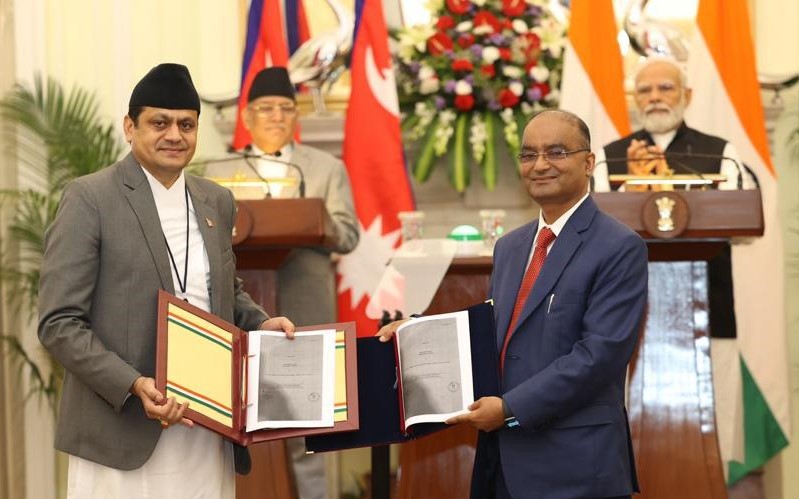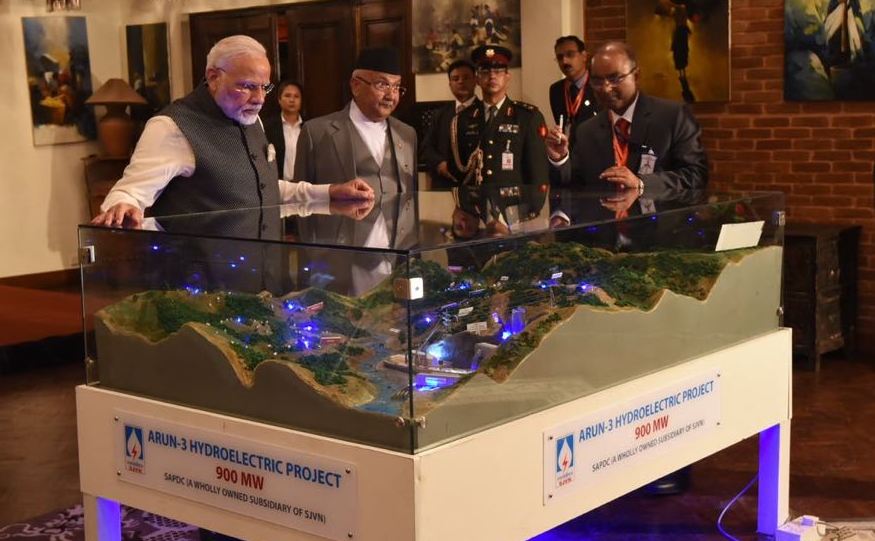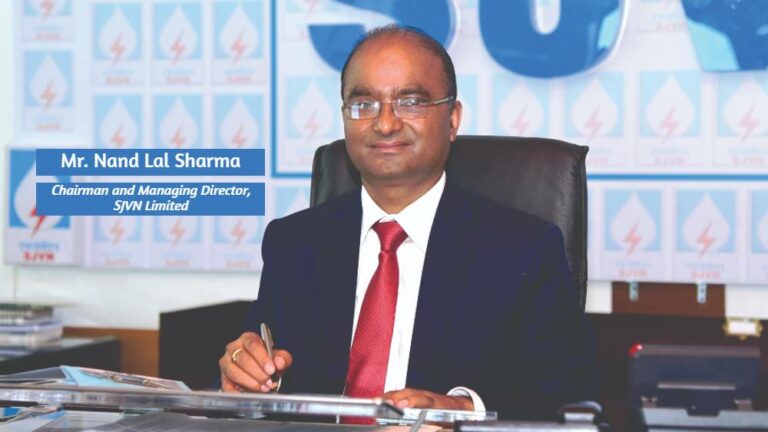The philosopher Arthur Schopenhauer once observed: “Most people take the limits of their vision to be the limits of the world. A few do not. Join them.” Mr. Nand Lal Sharma, the Chairman and Managing Director, SJVN Limited belongs to that group, probably he joined it early at his career. He is also the Chairman of SJVN Arun-3 Power Development Company, Nepal, SJVN Thermal Private Limited, and Bihar & SJVN Green Energy Limited.
A visionary, without doubt, he has proved his skill, administrative capabilities, conviction to dream big and make it happen despite all the hurdles in the world very convincingly. His efforts have not got unnoticed. Equity investors have looked back at the much neglected ‘government company’ that he is leading at present. The journey of the stock is too evident.
He started his career as an officer with the Himachal Pradesh Administrative Services, has held various key administrative posts and got associated with SJVN in 2008. While holding almost all the major positions in the group for a decade, who could be a better person to feel the pulse of the company?
It must have been the only reason why since he took over as Chairman & Managing Director in December 2017, the company has seen exponential growth in India and abroad. In a short span of time under his leadership the Portfolio of the company has expanded from 5200 MW in 2017 to around 46,879 MW at present. Under his dynamic leadership, SJVN has transformed into fully diversified transnational company operating in all verticals of energy. No denying the fact that he has played a pivotal role in expansion and diversification of SJVN in the fields of Hydro, Thermal, Solar, Wind, Transmission, Consultancy and Power Trading. He is now leading SJVN towards realizing its Shared Vision of 5000 MW by 2023-24, 25000 MW by 2030 & 50000 MW capacity by 2040.
Since he took over as CMD the Company’s all key parameters be it Project Portfolio, Networth, CAPEX, Share Price, Market Capitalization, Revenue, Book Value, etc. have scaled their All-Time Highs during recent months. His advocacy for “One Basin, One Developer” approach for integrated River Basis Development for optimum utilization of resources has found widespread acceptance and is now part of hydro development policies of many State Governments & GOI as well as Government of Nepal.
With Indian Economy & Market in a freewheeling chat Mr. Nand Lal Sharma dwells at length about the journey so far, his strategies, future plans and the road ahead.
There are a lot of disruptions happening in the entire segment of economy and industry including the sector you are operating in. Your take?
Major disruptions expected to crop up in power sector could be an increase in per capita consumption of power from current levels of 1255 KWh per annum (2022) to the levels of developed countries by 2047, i.e. of the order of 6000 KWh per annum; a shift from thermal power to renewable power – achieving 50 per cent power production from RE sources by 2030; increased use of electric power for mobility, cooking, heating requirements; shift of power consuming industries from fossil fuels to electric & hydrogen energy; shift from long term Power Purchase Agreement (PPA) market to power exchange and an option for consumers to opt for RE power in place of fossil fuel based power, etc.
Keeping all this in mind, we have also aligned our goal to convert the disruptions into a business opportunities. We’ve set a target of 23 GW renewable energy capacity addition out of GoI target of 500 GW from non-fossil energy by 2030. The Company is targeting to achieve net zero emissions by 2070 in line with GoI target. To achieve the above, SJVN is aggressively pursuing expansion of its renewable energy portfolio. Presently, the company has a total renewable energy portfolio of about 56,164 MW and also has strong financials. We are also installing a green hydrogen pilot plant at Nathpa Jhakri Hydro Power Station to study the nuances of the new business. SJVN has ventured in to the field of Power Trading to grab opportunities arising from shift from long term PPAs to power trading through exchanges.
“We are aggressively pursuing expansion of our renewable energy portfolio. Presently, the company has a total renewable energy portfolio of about 56,164 MW and also has strong financials.”
Please tell us about your diversification strategy, especially in light of your recent MoU with PFC?
You know, SJVN has already diversified into almost all forms of energy i.e. Hydro, Thermal, Wind, Solar, pumped Storage Projects, Power trading and Transmission. The company is aggressively pursuing expansion of its solar and wind portfolio and formed a new wholly owned subsidiary SJVN Green Energy Limited. Pilot project for producing Green Hydrogen and Green Power is under progress at NJHPS, Jhakri. Recently, the Ministry of New and Renewable Energy (MNRE) has designated SJVN, as a Renewable Energy Implementing Agency (REIA). In this direction, SJVN has signed a MoU with PFC for financing projects of about Rs 1.18 lakh crore for 12 GW capacity. Around 67-76 per cent of fund will be arranged by PFC.

How do your capex plan align with your overall business strategy? Can you share more details about these plans?
We already have planned capacity addition to 25000 MW by 2030, for which projects have to move from planning stage to construction stage in a big way. In order to achieve this ambitious target, we are increasing our CAPEX spending by leaps and bounds. The company’s CAPEX has increased 25 times in the last six years. During the last financial year only, the company achieved CAPEX of Rs 9035 crore against the target of Rs 8000 crore. During the current Financial Year as on September 30, 2023, the company has achieved CAPEX of Rs 3332.26 crore against annual target of Rs 10000 crore.
“We have planned capacity addition to 25000 MW by 2030. In order to achieve this ambitious target, our CAPEX has increased 25 times in the last six years.”
What caused the company’s revenue and net profit to decline in Q1FY24 compared to the same period last year?
The revenue and net profit in Q1FY24 declined due to decrease in generation during this period by approximately 675 MU. Further, the revenue and net profit in Q1FY24 also declined in comparison to corresponding quarter of previous year due to recognition of an arrear amounting to Rs. 290 crore pertaining to earlier years in the corresponding quarter of previous year on account of impact of CERC orders.
What is your forecast for revenue and net profit in FY24?
Revenue from operation of the group, consolidated basis for the FY24 is Rs. 3200 crore, which is also the MOU target for the fiscal.

What is your outlook for the India’s power generation and distribution sector and how SJVN is contributing in the Government’s Atmanirbhar Bharat Scheme?
SJVN is a power generating company. The total installed capacity in the country is 425 GW and GoI has planned to enhance installed capacity to 777 GW by 2030. In line with this, SJVN is committed to enhance its installed capacity and has also drawn an ambitious target to augment the renewable portfolio of the country.
We already have set a target of 25 GW contributions to the GoI’s target of 777 GW by 2030. Also, SJVN aims to be a 50 GW company by 2040. SJVN is also contributing in the Government’s Atmanirbhar Bharat initiative by awarding all recent major works of the projects through domestic bidding. The efforts are also being made in the direction of import reduction to boost the business of local manufacturers in line with the Atmanirbhar Bharat scheme.
So you see, we are well into contributing whatsoever is possible towards the Government’s Atmanirbhar Bharat Scheme. And I must assure, we are serious about it.






















